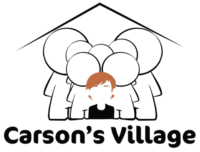Choosing a casket:
Caskets can often be the most expensive part of a funeral. There are many different options to choose from. Most funeral homes will have a broad selection of offerings. Caskets can range from a couple of hundred dollars to tens of thousands of dollars, and many factors will influence the overall price. It is important to have a budget in mind for the casket, as the funeral home will provide you with a list of prices and options to choose from. While purchasing a casket from a funeral home is convenient, they don’t always have the most cost-efficient options.
Funeral homes are bound by the Federal Trade Commission’s “Funeral Rule” which sets specific federally enforced standards upon them. In terms of caskets, the FTC regulates that funeral homes must:
- Show you the price of caskets before showing you the actual casket
- Release pricing information on the phone
- Allow you to use an “alternate container” for cremation (other than a casket)
- Allow you to provide your own casket or burial container
You can read more about the Funeral Rule HERE.
Some Questions to ask yourself before you choose a casket:
Did your loved one express any thoughts about the funeral: e.g. a viewing, a wake, closed or open casket, or cremation? These answers will help inform your choice of the casket.
Does your religion or religious leader offer any guidance concerning the casket?
What do you remember, from past funerals, about healing or difficult experiences surrounding seeing a casket?
To decide which type of casket best serves your needs, the parts or makeup of the casket are good insights into price and quality.
Material
First, the material that the casket is comprised of greatly influences its price and overall quality. Caskets in the mid-to-upper range can be made of:
- Copper
- Bronze
- Stainless or Carbon Steel
- Solid Wood
Wood caskets are often priced similarly to furniture, with harder woods such as mahogany, walnut, and cherry being more expensive than softer woods such as willow, pine, and poplar. Medium-grade woods like oak, maple, and birch fall in the middle of the price range. There are also options of veneered wood and laminate.
More environmentally conscious caskets are often made of decomposable and natural materials and are usually at a much lower price point. Examples of “green” casket materials are:
- Cardboard (can be recycled cardboard)
- Wicker
- Hemp
- Pine
- Cloth
- Bamboo
- Teak
- Organic cotton
- Banana leaf
*For more information about green burials, you can visit Green Burial Council.
While these options are becoming more popular, it is important to check with your funeral home and also your cemetery upon any state regulations for alternative burial containers.
Size
Although the length of the casket is rarely a problem, the width can cause issues, particularly for larger individuals. The standard size for a casket is generally 84 inches long, 28 inches wide, and 23 inches tall. If these dimensions are too small, you may need to look into an “oversize” casket.
Features
Lids:
- The casket lid can open in two ways for standard caskets. A “full couch” is a lid that opens all at once, while a “half couch” is a lid that opens only half the casket (the top or bottom). This can be a consideration based on how you would like the loved one to be viewed, their whole body (full couch) or only their upper body (half couch).
Linings:
The inside of the casket will usually be lined based on your preference, but of course, the options vary by price and quality. The more customizations you choose, the higher the cost will normally be.
- The standard options are usually velvet, satin, polyester, crepe, velour, or linen with velvet being the most expensive and polyester being the least expensive.
- The lining may also be arranged in many different manners like ruffled, tufted, or tailored.
- The lining may also be dyed or patterned based on the preference of the family.
Engravings and other features
- The head panel, or the underside of the lid of the casket shown during a viewing, can be adorned with engravings, designs or casket lid inserts for an additional price.
- Memory boxes, drawers, or tubes are an additional add-on to a casket that is inserted inside the material of the casket itself where you can place special memorabilia or objects to be buried with the casket.
- Casket corners are optional add-ons that place designs on the corners of the casket. These can honor their profession or hobby or simply be another ornate feature to accent the casket.
Choosing a Casket Provider
As stated in the Funeral Rules, you have the option of where to find your casket. The most general places you will find caskets are:
- Funeral homes – they will always provide you with prices and options for caskets and here you are protected by the FTC.
- Third-Party Retailers – casket sellers in your community that are independent of funeral homes might have more options for customization or affordability.
- Online – Many large chain retailers (like Costco and Walmart) as well as smaller companies sell caskets at a range of options and will ship the casket to the funeral home.
- Renting – rentable caskets with removable interior linings and wooden boxes are an option if you would like something that looks higher end for the viewing but do not wish to bury or own the casket. These are available through community providers, online, and most funeral homes will have rental options.
Overall, finding a casket can be a costly and lengthy process, but having a better understanding of the features and options for finding a casket can help you be better prepared in the long run.
